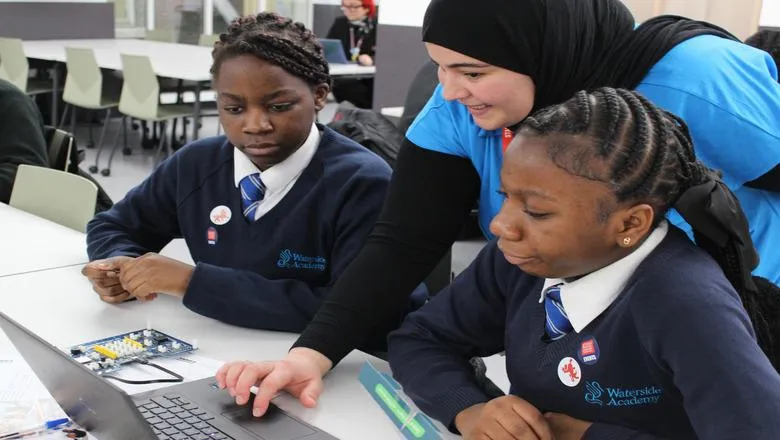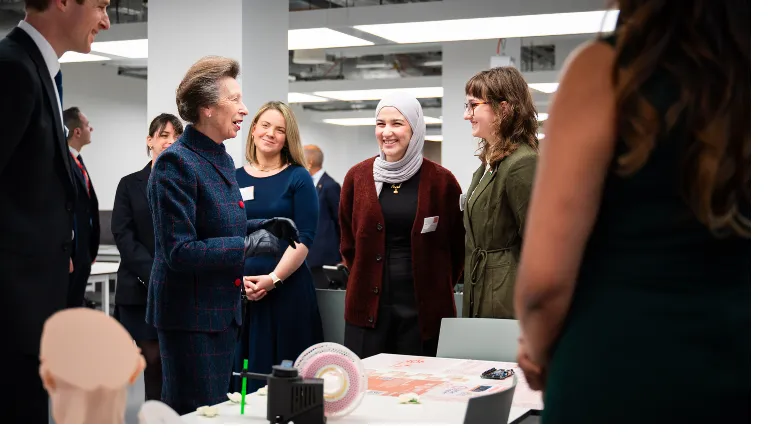Overview & Heritage
- The Centre for Robotics Research (CORE) was initiated within Department of Engineering from 2007. It has been reinstated within the new Engineering department from 2019.
- So far, the Centre has hosted over 500 academics, postdoc and PhD researchers, visiting and professional staff, with diverse background in electrical, computer, mechanical, biomedical and space engineering.
- The Centre members have carried out R&D funded by UKRI, EU, RAEng, RS, UKSA, ESA as well as companies from manufacturing, automotive, food, healthcare and space sectors, and contributed to research programs worth £30m+.
- We collaborate worldwide with 100+ partners from academia and industry in Europe, America, Asia-Pacific and Africa.
- The Centre members have received numerous inter/national recognitions for research excellence including awards by IEEE, IMechE, COSPAR, ASME and UK-RAS, and fellowships of IET, RAeS, EC and EPSRC, etc.
Research Expertise
- The Centre offers expertise in major cross-cutting topics in robotics research:
- Sensing & Perception
- Design, Simulation & Mechatronics
- Mechanisms & Structures
- Control & Autonomy
- Learning & Intelligence
- Human-Robot Interaction
- The Centre currently has 9 full-time academic staff, demonstrating synergies, capabilities, and strengths across robotics area.
- The Centre undertakes interdisciplinary approach and aims for sustainable goals in our R&D, engaging with wider expertise in materials, informatics, ethics, policy, and medicine.
Research Facilities
- The Centre offers a dedicated lab space (>350m2) for robotics research, as part of a £40m capital investment in the Engineering department, located in central London.
- Our robotics lab offers a range of state-of-the art equipment and testbeds required for robotics validation and demonstration.
- Various commercial robotic platforms, from legged, wheeled to humanoid robots.
- Unique or bespoke designed robotic testbeds for industrial use cases, such as Orbital Robotics Testbed, Tactile Robotics Testbed, and Subsurface Robotics Testbed.
Our Vision Statement
“CORE strives to drive progress, foster creativity, and shape a future where robotics positively transforms our world”- Head of CORE, Professor Yang Gao
- Enabling Sustainable Solutions: Our research advances the robotics and autonomous systems that contribute to sustainable practices across industries, from manufacturing, space to healthcare.
- Innovating Ethical Robotics: We commits to ethical considerations, researching robotics with a focus on responsibility, transparency, and inclusivity.
- Interdisciplinary Excellence: We aim to lead in interdisciplinary research, fostering collaborations that transcend traditional boundaries and amplify the impact of robotic advancements.
- Empowering Future Innovators: Through cutting-edge educational programs (such as CORE-led MSc and PhD in Robotics), we aspire to empower the next generation of robotics leaders, equipping them with the skills and mindset needed to tackle future challenges.
- Global Thought Leadership: We envision our research & educational initiatives contributing to global thought leadership in robotics, influencing the discourse and shaping the trajectory of this dynamic field.
Themes

Structure
The design of the physical structure comprising a robot’s body is key to enabling motion, balance and manipulation. Robots that can change body shape, such as ‘metamorphic’ and ‘soft body’ robots, provide unique flexibility to navigate uneven surfaces and constrained spaces, while manipulators that can change can grasp irregular objects and perform dexterous tasks. --- Why is it hard for a robot to walk? Robots need to carry a processor and power supply, as well as sensors, and these components can be heavy and awkward. Metamorphic or ‘origami’ designs allow a robot’s structure to rebalance as it moves, making walking more tractable. --- Why is it difficult for a robot to grasp? Picking up objects requires a complex combination of vision and touch. Creating robots that can grasp, hold, tilt, and push objects with just the right amount of strength brings robots closer to human-like dexterity, and greatly increases their usefulness.

Sensing
Robotic sensing gives robots the ability to see, touch, hear and move around with the help of environmental feedback. Robotic sensors may be analogous to human sensors, or may allow robots to sense things that humans cannot. --- Sensing can be ‘local’, where robots are in the same physical space as human controllers or collaborators. ‘Haptic’ sensing is one type of local sensing. Haptic data can enable a robot to interact successfully with the physical world. Researchers in this area try to understand how people make use of touch and apply this understanding to develop robots that perform more accurately – possibly saving lives in the process! --- Sensing can also be ‘remote’, where robots are located away from humans. Remote sensing includes medical imaging sensors that are attached to probes and employed for surgical procedures, chemical sensors that are attached to mobile robots and employed for detecting explosives, and environment sensors that are attached to drones (unmanned aerial vehicles, or UAVs) and are employed for observing and modelling the earth.

Motion
Walking across a room without crashing into furniture, crossing a crowded street without bumping into others or lifting a coffee cup from a table to one’s lips are tasks performed by most people without much conscious thought. But a robot has to choreograph its every move. --- Motion can be engineered, using kinematic equations that design trajectories for leg, arm or wheel actions, or planned, using artificial intelligence to determine sets of actions and adjust in real-time if feedback indicates that actions were not executed as planned. The path or trajectory of such motion should be designed effectively, so that a robot achieves its goal, and efficiently, so that it does not waste energy, a precious resource for any robot.

Human-Robot Interaction
Human-robot interaction (HRI) research attempts to study the expectations and reactions of humans with respect to robots so as to ensure effective interactions. This can range from how workers behave when controlling robots remotely, to how humans trapped in a collapsed building might respond to a rescue robot, to how people can make decisions jointly with intelligent robots. HRI research is integrated within much of our robotics research: if we know how humans are likely to respond, we can build robots that fit in with that behaviour.

Learning
Learning is how robots can acquire skills or adapt to environments beyond their pre-programmed behaviours. Robots can learn in many ways – by reinforcement, by imitation, and autonomously, for example. As such methods develop, new applications for robotics are emerging that aim to bring AI (artificial intelligence) into the ‘real world’. --- ‘Reinforcement Learning’ techniques associate a reward with specific outcomes due to robot actions and involve an iterative process in which a robot learns to maximise its reward through sequences of trial-and-error actions. ‘Learning from Demonstration’ techniques offer human-in-the-loop training, where a robot learns to imitate the actions of a human demonstrator. ‘Statistical Machine Learning’ techniques, such as artificial neural networks, allow a robot to detect and recognise patterns in its environment and develop appropriate responses without guidance from a human teacher.

Multi-Robot Systems
In multi-robot systems, robots coordinate with each other to perform complex tasks that might be difficult or inefficient for a single robot. This often involves dispatching small sub-problems to individual robots and allowing them to interact with each other to find solutions. In heterogeneous robot teams, different robots have different capabilities, so the coordination becomes more constrained and hence, more complex. Multi-robot systems have a wide set of applications, from rescue missions to delivery of payloads in a warehouse.
Publications
News
King's Culture announces Creative Practice Catalyst Seed Fund recipients
King's Culture announce the recipients of a new creative practice seed fund, enabling researchers and academics to consolidate relationships with partners in...

“Interactive, fascinating, new experiences”: King's inspires future engineers at Success for Black Students outreach days
Academics, students and technicians came together to bring engineering to life for 64 London highschoolers at two Success for Black Students events.

King's welcomes The Princess Royal for official opening of the Quad
HRH The Princess Royal, in her role as Chancellor of the University of London, officially opened the Quadrangle (Quad) building at King’s College London.

Former Paralympian builds brighter future for prosthetic limb users with King's
Britain’s former youngest Paralympian tested prototype prosthetic arms to create better designs

COMMENT: NASA/MSFC Trump may cancel Nasa's powerful SLS Moon rocket – here's what that would mean for Elon Musk and the future of space travel
Professor Yang Gao explores the implications of cancelling the SLS moon rocket.

Themes

Structure
The design of the physical structure comprising a robot’s body is key to enabling motion, balance and manipulation. Robots that can change body shape, such as ‘metamorphic’ and ‘soft body’ robots, provide unique flexibility to navigate uneven surfaces and constrained spaces, while manipulators that can change can grasp irregular objects and perform dexterous tasks. --- Why is it hard for a robot to walk? Robots need to carry a processor and power supply, as well as sensors, and these components can be heavy and awkward. Metamorphic or ‘origami’ designs allow a robot’s structure to rebalance as it moves, making walking more tractable. --- Why is it difficult for a robot to grasp? Picking up objects requires a complex combination of vision and touch. Creating robots that can grasp, hold, tilt, and push objects with just the right amount of strength brings robots closer to human-like dexterity, and greatly increases their usefulness.

Sensing
Robotic sensing gives robots the ability to see, touch, hear and move around with the help of environmental feedback. Robotic sensors may be analogous to human sensors, or may allow robots to sense things that humans cannot. --- Sensing can be ‘local’, where robots are in the same physical space as human controllers or collaborators. ‘Haptic’ sensing is one type of local sensing. Haptic data can enable a robot to interact successfully with the physical world. Researchers in this area try to understand how people make use of touch and apply this understanding to develop robots that perform more accurately – possibly saving lives in the process! --- Sensing can also be ‘remote’, where robots are located away from humans. Remote sensing includes medical imaging sensors that are attached to probes and employed for surgical procedures, chemical sensors that are attached to mobile robots and employed for detecting explosives, and environment sensors that are attached to drones (unmanned aerial vehicles, or UAVs) and are employed for observing and modelling the earth.

Motion
Walking across a room without crashing into furniture, crossing a crowded street without bumping into others or lifting a coffee cup from a table to one’s lips are tasks performed by most people without much conscious thought. But a robot has to choreograph its every move. --- Motion can be engineered, using kinematic equations that design trajectories for leg, arm or wheel actions, or planned, using artificial intelligence to determine sets of actions and adjust in real-time if feedback indicates that actions were not executed as planned. The path or trajectory of such motion should be designed effectively, so that a robot achieves its goal, and efficiently, so that it does not waste energy, a precious resource for any robot.

Human-Robot Interaction
Human-robot interaction (HRI) research attempts to study the expectations and reactions of humans with respect to robots so as to ensure effective interactions. This can range from how workers behave when controlling robots remotely, to how humans trapped in a collapsed building might respond to a rescue robot, to how people can make decisions jointly with intelligent robots. HRI research is integrated within much of our robotics research: if we know how humans are likely to respond, we can build robots that fit in with that behaviour.

Learning
Learning is how robots can acquire skills or adapt to environments beyond their pre-programmed behaviours. Robots can learn in many ways – by reinforcement, by imitation, and autonomously, for example. As such methods develop, new applications for robotics are emerging that aim to bring AI (artificial intelligence) into the ‘real world’. --- ‘Reinforcement Learning’ techniques associate a reward with specific outcomes due to robot actions and involve an iterative process in which a robot learns to maximise its reward through sequences of trial-and-error actions. ‘Learning from Demonstration’ techniques offer human-in-the-loop training, where a robot learns to imitate the actions of a human demonstrator. ‘Statistical Machine Learning’ techniques, such as artificial neural networks, allow a robot to detect and recognise patterns in its environment and develop appropriate responses without guidance from a human teacher.

Multi-Robot Systems
In multi-robot systems, robots coordinate with each other to perform complex tasks that might be difficult or inefficient for a single robot. This often involves dispatching small sub-problems to individual robots and allowing them to interact with each other to find solutions. In heterogeneous robot teams, different robots have different capabilities, so the coordination becomes more constrained and hence, more complex. Multi-robot systems have a wide set of applications, from rescue missions to delivery of payloads in a warehouse.
Publications
News
King's Culture announces Creative Practice Catalyst Seed Fund recipients
King's Culture announce the recipients of a new creative practice seed fund, enabling researchers and academics to consolidate relationships with partners in...

“Interactive, fascinating, new experiences”: King's inspires future engineers at Success for Black Students outreach days
Academics, students and technicians came together to bring engineering to life for 64 London highschoolers at two Success for Black Students events.

King's welcomes The Princess Royal for official opening of the Quad
HRH The Princess Royal, in her role as Chancellor of the University of London, officially opened the Quadrangle (Quad) building at King’s College London.

Former Paralympian builds brighter future for prosthetic limb users with King's
Britain’s former youngest Paralympian tested prototype prosthetic arms to create better designs

COMMENT: NASA/MSFC Trump may cancel Nasa's powerful SLS Moon rocket – here's what that would mean for Elon Musk and the future of space travel
Professor Yang Gao explores the implications of cancelling the SLS moon rocket.







